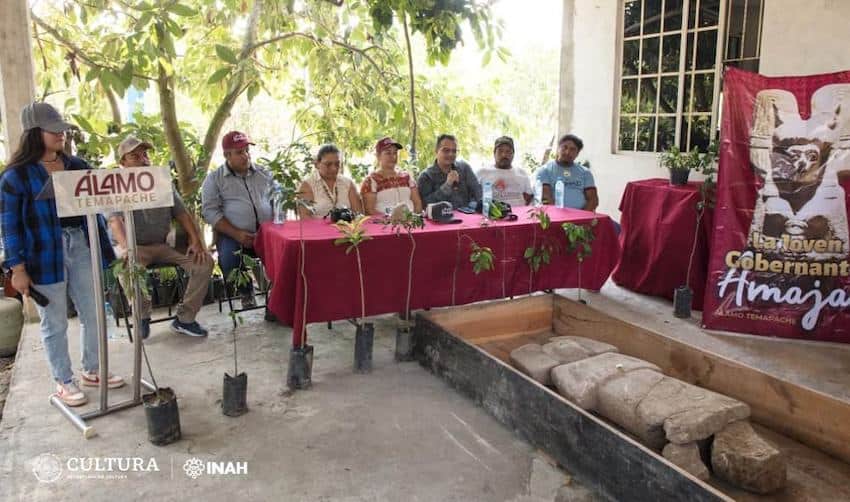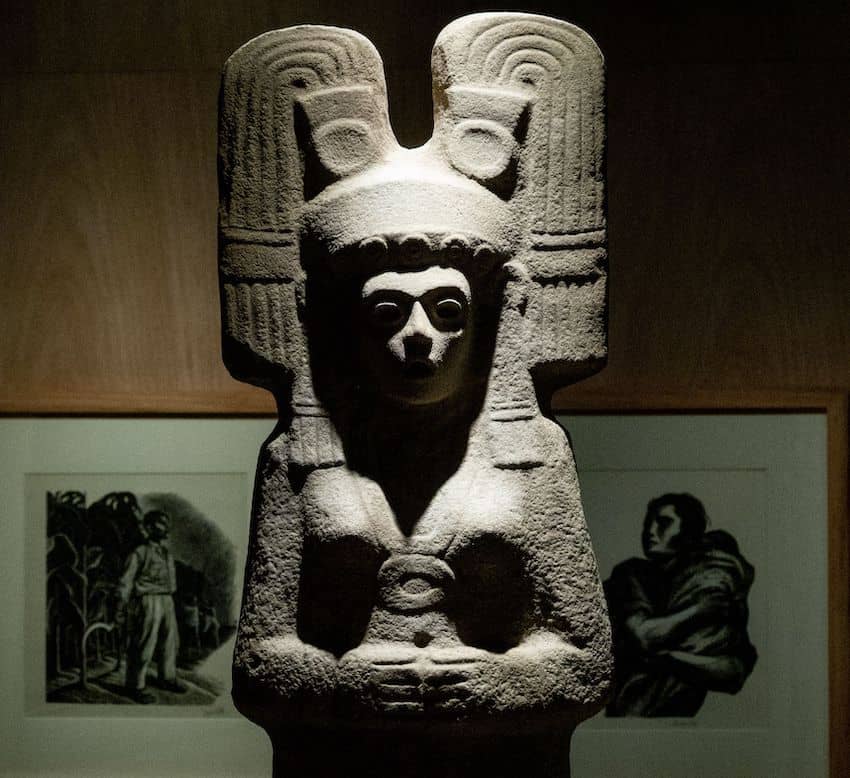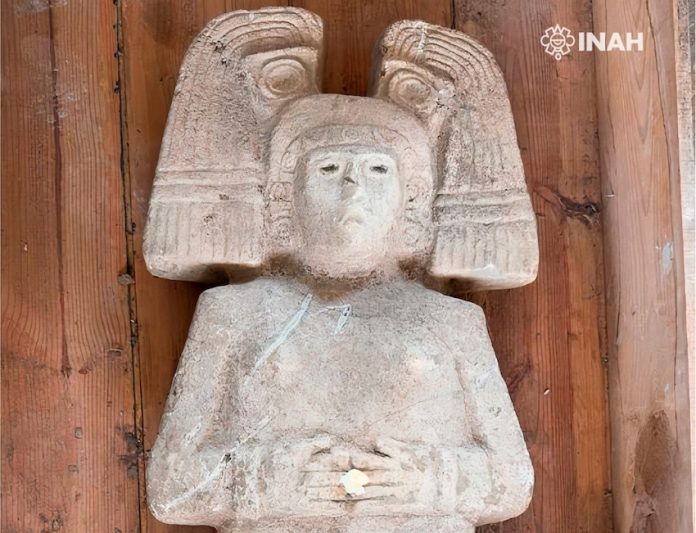A pre-Columbian sculpture has been discovered by residents of a Veracruz town on Tuesday that resembles one of Mexico’s most important recent archaeological findings, made in the same village of Amajac in January 2021.
The remarkably well-preserved statue was uncovered during road paving work and is believed to represent the same figure as the “young woman of Amajac.” The new discovery was presented to the public at a press conference on Wednesday hosted by local authorities and officials from the National Institute of Anthropology and History (INAH).

Standing 1.54 meters high and weighing between 200 and 250 kilograms, it is slightly smaller than the 2-meter-high previous find. But the two statues wear headdresses with very similar decorations, leading experts to hypothesize they are representations of the same figure, possibly a female Huasteca ruler.
“In Huasteca tradition, important characters appear in various relief images or sculptures, but always with an identifying attribute,” said Veracruz archaeologist María Eugenia Maldonado Vite. She referenced the case of 13 Conejo, a ruler whose depictions have been found at the archaeological site of El Tajín.
13 Conejo, Maldonado said, “has appeared in various monuments and always wears a headdress that must have been specific to him.”
Although the original statue of the young woman, also called the “young ruler of Amajac,” dates from the Late Postclassic period (1450-1521 AD), Maldonado said the new piece may be evidence of a sculptural tradition dating from the Early Postclassic (1100 to 1200 AD), before the Mexica conquest of the Huasteca region.

However, she added, “none of the sculptures were found in the original place where they were displayed, which would surely have been a public space to present the figure in a position of power… they may have been hidden by their creators in order to protect them.”
Lilia Arrieta Pardo, the mayor of Álamo Temapache, the municipality in which Amajac is located, said it was a “historic” day for the community.
The first sculpture, found in a local orange grove, has since become an icon in Veracruz and had even been proposed as a replacement for the statue of Christopher Columbus on Mexico City’s Paseo de La Reforma Avenue.
The Columbus statue ended up being replaced in November 2021 by a monument erected by a feminist group.
The head of INAH’s Veracruz center, José Manuel Bañuelos, praised the residents who made the discovery.
“News like this gives us encouragement and vigor for the… daily life of our communities to strengthen and move forward,” he said.
The local city council, he added, has already requested to begin cleaning and restoration work on the newly discovered piece, after which more detailed research can begin on its origins.
With reports from La Lista
